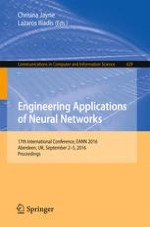2016 | Buch
Engineering Applications of Neural Networks
17th International Conference, EANN 2016, Aberdeen, UK, September 2-5, 2016, Proceedings
herausgegeben von: Chrisina Jayne, Lazaros Iliadis
Verlag: Springer International Publishing
Buchreihe : Communications in Computer and Information Science
